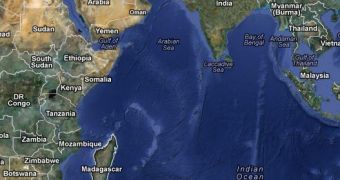This past February 24, the scientific journal Nature Geoscience witnessed the publication of a new study making a case of how, according to several geological findings, the remains of a prehistoric continent are now lying at the bottom of the Indian Ocean, between Madagascar and India.
The researchers responsible for pinning down this so-called ghost continent have decided to name it Mauritia.
According to their presuppositions, this particular landmass used to be attached to present-day Madagascar, yet broke off about 85 million years ago.
As far as the researchers could tell, the fragments that allegedly used to make up Mauritia amount to an area roughly three times bigger than that of Crete, which is why it was agreed upon that this landmass would be best referred to as a microcontinent.
Prior to their forwarding this theory concerning the presence of a long-lost microcontinent under the Indian Ocean, the scientists working on this research project took to analyzing rock and sand samples collected from beaches in Mauritius.
Apparently, some of these samples were found to contain fragments of a very specific type of rock that used to stand at the core of ancient continental crusts, sources say.
Thus, they managed to find roughly 20 crystals of zirconium silicate (i.e. zircons) that were significantly older than the other materials found on the island of Mauritius.
It is the researchers' belief that these zircons, one of which was 1.97 billion years old, used to be part and parcel of this ancient microcontinent, and that they only made it all the way to the water's surface because of volcanic eruptions.
“There’s no obvious local source for these zircons,” explains Conall Mac Niocaill, a geologist currently working with the University of Oxford, UK, who did not take part in this research, but who seems to support the theory that a ghost continent might be resting at the bottom of the Indian Ocean.
Backing up this statement, Robert Duncan, a marine geologist at Oregon State University in Corvallis also says that, “There’s a remote possibility that they were wind blown, but they’re probably too large to have done so.”

 14 DAY TRIAL //
14 DAY TRIAL //